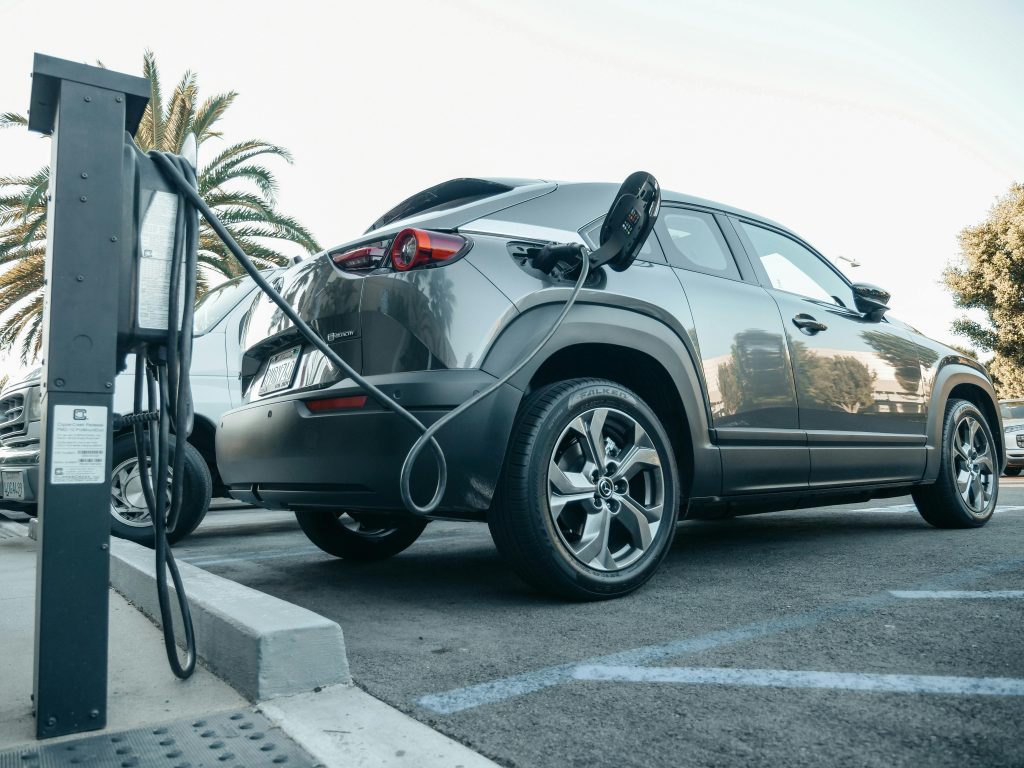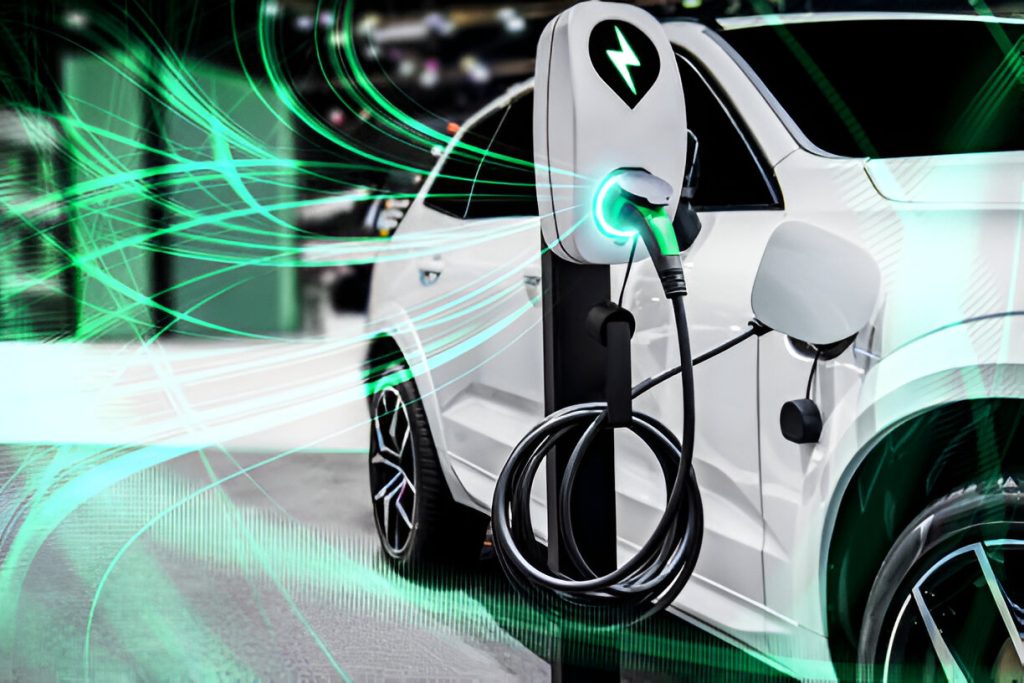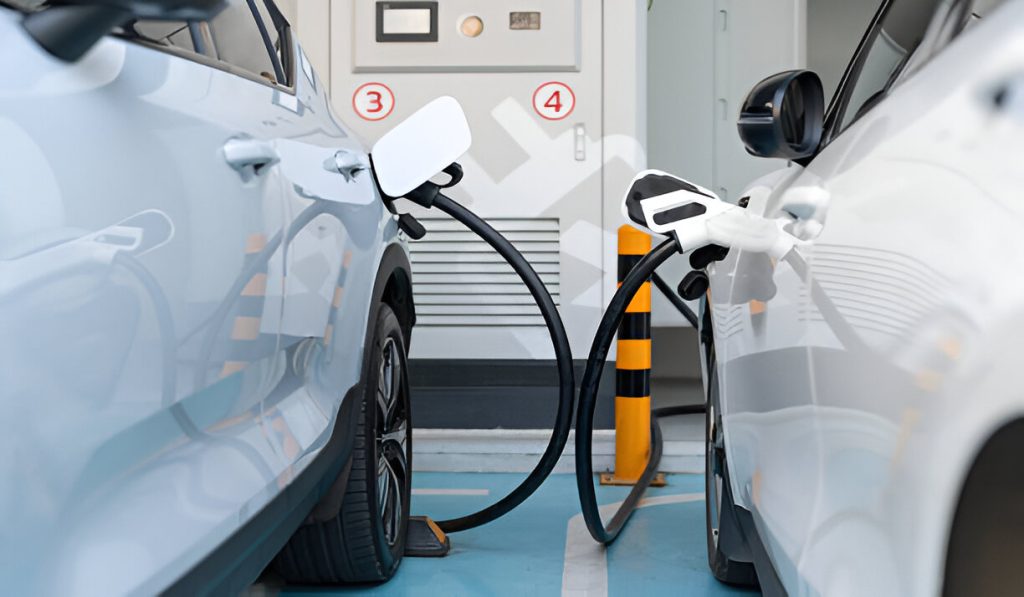
The shift towards electric vehicles (EVs) has created a growing demand for accessible charging infrastructure. Elite Vehicle Chargers, part of Power-Sonic Corp, is leading the way in this transformation, offering innovative EV charging solutions designed to meet the needs of this rapidly expanding market.
Investing in EV charging stations is a promising opportunity for both entrepreneurs and investors. By partnering with companies like Elite Vehicle Chargers, you can enter this growing market and contribute to the clean transportation movement.
In this article, we will explore the various opportunities that investing in EV charging stations can offer:
Understanding market trends
- It selects the right types of chargers, such as those offered by Elite Vehicle Chargers, including the popular Easee Charger range that boasts increased range and sleek design. These chargers are also OZEV-approved for homes or offices with a warranty.
- Strategies to maximize profitability, including factors like location and demand analysis, as well as considering cost-effective options such as home EV chargers for residences across London & Surrey within 10 days at affordable prices.
Whether you’re an entrepreneur looking to enter this space or an investor seeking a high-growth opportunity, this guide is designed to provide valuable insights and actionable information.
The Growing Demand for EV Charging Stations
The increasing popularity of electric vehicles (EVs) worldwide has created a huge demand for convenient charging infrastructure. As governments and people become more conscious of the environment and shift towards greener transportation choices, the importance of having a strong network of EV charging stations is clear.
Why the Demand for EV Charging Stations is Rising
Several factors are contributing to the growing need for EV charging stations:
- Government Initiatives: Many countries are implementing policies to reduce carbon emissions, which is driving the rapid growth of the EV market. For example, California has set ambitious targets for zero-emission vehicles and aims to have 500,000 new EV charging outlets by 2030.
- Consumer Preferences: With increasing awareness of climate change, more consumers are choosing eco-friendly vehicles over traditional gasoline-powered cars.
- Technological Advancements: The development of better battery technology and the availability of different types of chargers (such as Level 2 and DC fast chargers) are making owning an EV more convenient and practical.
How Businesses Can Benefit from Investing in EV Charging Stations
Businesses can take advantage of this trend by investing in EV charging stations. Here’s why it makes sense:
- Enhanced Customer Experience: Installing public EV chargers at locations like business parks can attract customers who drive electric vehicles. They’ll appreciate the convenience of being able to charge their cars while visiting your establishment.
- Employee Satisfaction: Providing workplace charging stations shows your commitment to sustainability and can be a valuable perk for employees who own EVs.
- Cost Savings: For commercial installations like workplaces and hotels, implementing smart charging solutions can help optimize electricity usage and potentially reduce utility costs.
- Environmental Impact: By supporting the transition to electric transportation, businesses can contribute to reducing air pollution and greenhouse gas emissions.
How to Get Started with EV Charging Stations
If you’re interested in exploring the benefits of EV charging stations for your business, here are some options to consider:
- EV Chargers For Business: Find out how you can install EV chargers at your business park and cater to the needs of electric vehicle owners. These public EV chargers for business parks are Tesla-approved and offer custom solutions.
- Commercial Charger Installation: Learn about the process of setting up charging infrastructure at commercial properties like workplaces and hotels. These commercial EV charger installations are eco-friendly, cost-saving solutions that come with a £14K Govt Grant.
Investing in EV charging stations not only positions your business as environmentally conscious but also opens up new opportunities in the evolving market of clean transportation.

Types of EV Chargers and Considerations for Station Owners
Investing in EV charging stations requires a solid understanding of the different types of chargers, their charging speeds, and compatibility. Each charger category serves a specific purpose and caters to various user needs.
Charger Categories:
Level 1 Chargers
- Charging Speed: Slow (120V), typically adds 3-5 miles of range per hour.
- Use Case: Ideal for residential use where vehicles can charge overnight.
Level 2 Chargers
- Charging Speed: Medium (240V), adds about 10-20 miles of range per hour.
- Use Case: It is suitable for both residential and public settings, such as workplaces, shopping centers, and parking lots.
DC Fast Chargers
- Charging Speed: Rapid (400V+), can add up to 60-80 miles of range in just 20 minutes.
- Use Case: Best suited for high-traffic areas like highways, rest stops, and urban locations where quick turnarounds are essential.
Considerations for Choosing the Right Mix:
- Location: High-density urban areas or highway rest stops may benefit more from DC fast chargers due to the need for quick charging. Residential or workplace settings might find Level 2 chargers more economical.
- Customer Demographics: Understanding your target users is crucial. Commuters who park for extended periods may prefer Level 2 chargers, while travelers on long trips will seek out DC fast chargers.
- Infrastructure Costs: DC fast chargers require significant electrical infrastructure and higher installation costs compared to Level 2 chargers. Balancing the initial investment with potential usage is key.
Choosing the right mix of chargers not only maximizes usability but also enhances your station’s attractiveness to a broader range of EV owners, ultimately boosting profitability.
Key Revenue Generation Strategies for EV Charging Businesses
Maximizing profitability in the EV charging business requires a blend of strategic pricing and enhancing customer experience. Here are several approaches to consider:
1. Dynamic Pricing Models
Implementing dynamic pricing can significantly boost revenue. This involves adjusting prices based on demand, time of day, or charging speed. For instance:
- Peak Pricing: Higher rates during peak hours when demand is high.
- Off-Peak Discounts: Lower rates during off-peak times to attract more users.
2. Subscription Plans
Offering subscription-based models can provide a steady revenue stream. Users pay a monthly fee for unlimited or discounted charging sessions, ensuring consistent usage and loyalty.
3. Value-Added Services
Enhancing the customer experience by providing additional amenities can encourage longer stays and repeated use:
- Retail Partnerships: Collaborate with nearby retail stores or cafes to offer discounts or promotions for customers using your charging stations.
- Convenience Features: Provide Wi-Fi, comfortable seating areas, or even fitness equipment to make the wait time enjoyable.
4. Advertising and Sponsorships
Charging stations can serve as advertising spaces. Partner with local businesses or brands to display ads on digital screens at your stations. This not only generates additional income but also enhances visibility for both parties.
5. Premium Charging Options
Offer premium services like faster charging for an added fee. DC fast chargers, for example, can be priced higher than Level 2 chargers due to their quicker turnaround time.
6. Bundle Deals
Create bundle deals that include multiple services such as parking and charging together at a discounted rate. This encourages users to choose your station over competitors.
Integrating these strategies ensures not just profitability but also a superior customer experience, making your EV charging station a preferred choice for drivers.
Marketing and Promotional Approaches to Drive Traffic to Your Charging Stations
Effective marketing strategies are crucial for attracting EV drivers to your charging stations. Here are some tactics to help you boost customer acquisition:
Leverage Digital Marketing Channels
- Social Media: Utilize platforms like Facebook, Instagram, and LinkedIn to engage with potential customers. Share updates, promotions, and educational content about EV charging.
- SEO and Content Marketing: Optimize your website for search engines by using relevant keywords such as “EV charging stations near me” or “fast EV chargers.” Regularly post blogs and articles that provide value to EV drivers.
- Email Campaigns: Send newsletters with offers, tips on charging, and updates on new station installations.
Strategic Partnerships
- Utility Companies: Collaborate with local utility companies to offer incentives or special rates for their customers.
- Retailers and Malls: Partner with shopping centers and big-box retailers to install chargers in their parking lots. This not only provides convenience but also increases foot traffic for both parties.
- Restaurants and Cafes: Work with dining establishments to offer discounts or promotions when customers use your charging stations.
On-Site Advertising
- Signage: Clear, attractive signage can guide drivers to your location easily.
- Promotions: Offer time-bound promotions such as free charging on weekends or discounts during off-peak hours.
Customer Experience Enhancements
- Loyalty Programs: Implement a rewards program for frequent users.
- Mobile App Integration: Develop an app that allows users to locate stations, check availability, and make payments seamlessly.
By adopting these marketing strategies, you can effectively drive traffic to your EV charging stations, ensuring higher utilization rates and customer satisfaction.
Leveraging Incentives and Partnerships in the EV Ecosystem
- Businesses can significantly benefit from various government incentives designed to promote the adoption of electric vehicles and the supporting infrastructure. These incentives often include tax credits, grants, and rebates for installing EV charging stations. By taking advantage of these programs, you can reduce upfront costs and increase the return on investment.
- Strategic alliances with utility companies present another lucrative opportunity. Utilities are often keen to support the development of EV infrastructure as part of their sustainability goals.
- Collaborating with them can provide access to co-funding opportunities, energy management solutions, and better electricity rates. These partnerships can also help in integrating renewable energy sources, which is becoming increasingly important for environmentally-conscious consumers.
- Forming partnerships with EV manufacturers can further enhance your business model. Manufacturers are interested in ensuring that their customers have access to reliable and widespread charging networks. By collaborating with them, you can benefit from shared marketing efforts and potentially secure exclusive deals on equipment and technology.
- These collaborative efforts not only lower costs but also create a more seamless charging experience for users by ensuring reliability and accessibility.

The Future Landscape of EV Charging Stations: Trends and Outlook
Smart charging technology and renewable energy integration are set to revolutionize the future of EV charging infrastructure. Smart chargers, equipped with IoT capabilities, allow for dynamic load management, real-time data analytics, and remote monitoring. These technologies ensure efficient energy distribution, reducing grid strain during peak hours.
Renewable energy sources like solar and wind can be integrated with EV charging stations to create a sustainable ecosystem. Solar-powered charging stations, for instance, offer a dual benefit: they reduce dependency on non-renewable energy and provide a cost-effective solution for station operators.
Potential growth markets include:
- Asia: Countries like China and India are rapidly adopting electric vehicles. China already has a robust network, but there’s significant room for expansion in rural areas. India’s government initiatives aim to boost EV adoption, presenting opportunities for infrastructure development.
- Africa: While still in its nascent stage, Africa’s EV market shows promise. South Africa leads the way with increasing adoption rates, but other countries are beginning to explore the potential of electric mobility.
- South America: Brazil and Chile are emerging as key players. Investments in public charging infrastructure are on the rise, driven by government policies promoting clean energy.
These emerging markets present untapped opportunities for businesses looking to invest in the future of EV charging.
Conclusion
Investing in EV charging stations is a great business opportunity for entrepreneurs and investors who want to support clean transportation. As electric vehicles become more popular worldwide, there is a growing need for convenient and dependable charging infrastructure.
Here are some key factors that make this investment opportunity attractive:
- Growing markets: Europe, the USA, and emerging regions like the Middle East are making substantial investments in EV infrastructure.
- Technological advancements: Smart charging technology and renewable energy integration are reshaping the industry.
- Government incentives: National and local governments offer various incentives to support EV infrastructure development.
Entrepreneurs and investors can take advantage of these trends by:
- Setting up EV charging stations in strategic locations
- Implementing innovative pricing models to attract customers
- Building partnerships with other businesses in the EV industry
By acting now, you can position yourself as a leader in this fast-growing market. Not only will you contribute to a cleaner environment, but you also have the potential to earn significant profits. Don’t miss out on this lucrative opportunity – start exploring the world of EV charging stations today!
